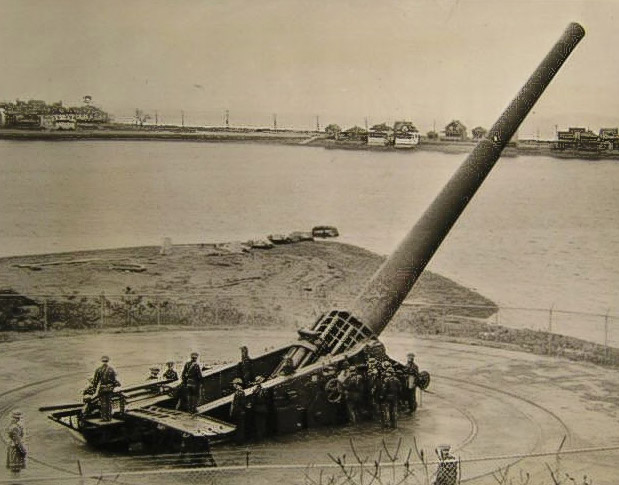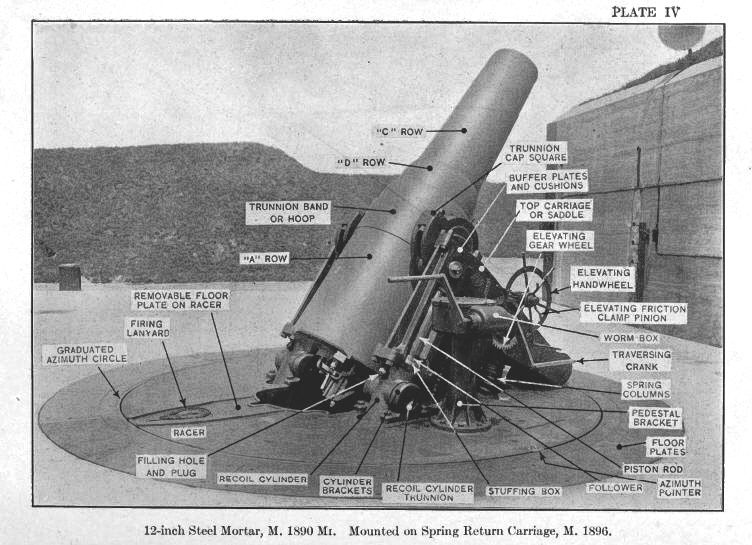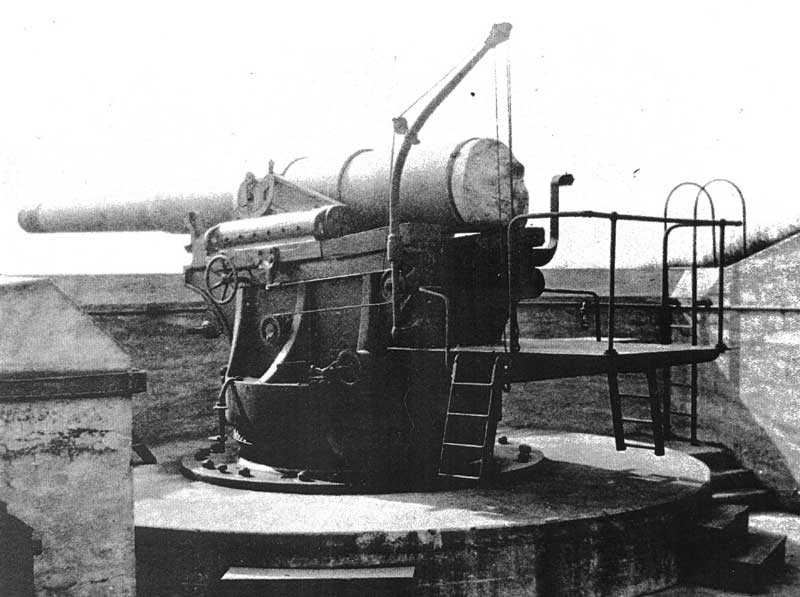|
Fort Terry
Fort Terry was a coastal fortification on Plum Island, a small island just off Orient Point, New York, United States. This strategic position afforded it a commanding view over the Atlantic entrance to the commercially vital Long Island Sound. It was established in 1897 and used intermittently through the end of World War II. In 1952, it became a military animal and biological warfare (BW) research facility, moving to civilian control in 1954 as the Plum Island Animal Disease Center. Despite the new civilian control, the biological warfare mission continued until 1969, when the US officially ended offensive BW research. The island is now being considered for sale or conversion to a wildlife refuge. Fort Terry was listed on the National Register of Historic Places in 2021. History Early history First “owned” by the Corchaug and Montaukett Indian tribes the Plum Island was "sold" to Samuel Wyllys for a coat, a barrel of biscuits and 100 fishhooks. The original fort was co ... [...More Info...] [...Related Items...] OR: [Wikipedia] [Google] [Baidu] |
Harbor Defenses Of Long Island Sound
The Harbor Defenses of Long Island Sound was a United States Army Coast Artillery Corps Harbor Defense Command, harbor defense command. It coordinated the coastal defence and fortification, coast defenses of Long Island Sound and Connecticut from 1895 to 1950, beginning with the Board of Fortifications, Endicott program. These included both coastal artillery, coast artillery forts (all but two on islands in the sound) and Submarine mines in United States harbor defense, underwater minefields. The area defended included the approach via the Sound to New York City, the port cities and manufacturing centers of New London, Connecticut, New London, New Haven, Connecticut, New Haven, and Bridgeport, Connecticut, Bridgeport, and eventually included the Naval Submarine Base New London, submarine base and Electric Boat, shipyard in Groton, Connecticut, Groton. The command originated circa 1900 as an Artillery District, was renamed Coast Defenses of Long Island Sound in 1913, and again renam ... [...More Info...] [...Related Items...] OR: [Wikipedia] [Google] [Baidu] |
Plum Island (New York)
Plum Island is an island in the town of Southold in Suffolk County, New York. The island is situated in Gardiners Bay, east of Orient Point, off the eastern end of the North Fork coast of Long Island. It is about long and wide at its widest point. Plum Island is the site of the Plum Island Animal Disease Center (PIADC), which was established by the United States Department of Agriculture (USDA) in 1954. The Island is also the site of the former U.S. military installation Fort Terry (c. 1897), and the historic Plum Island Light (c. 1869), and its automated replacement. Plum Island is owned in its entirety by the United States government, which was considering sale of the island, but suspended the plan in February 2012. Access to the island is controlled by the United States Department of Homeland Security (DHS). On August 29, 2013, the United States General Services Administration (GSA) and United States Department of Homeland Security (DHS) announced a final "Recor ... [...More Info...] [...Related Items...] OR: [Wikipedia] [Google] [Baidu] |
Frederick Steele
Major General Frederick Steele (January 14, 1819 – January 12, 1868) was an American military officer who served in the Army in the Mexican-American War, Yuma War, and American Civil War. He is most noted for capturing the Arkansas state capitol at Little Rock in 1863, escaping the besieged riverport city of Camden through successful deception tactics, and having repulsed an attack by Confederate forces under generals Kirby Smith and Sterling Price at Jenkins Ferry in 1864. Early life and education Steele, son of Nathaniel and Dameras (née Johnson) Steele, was born in Delhi, New York. He was an 1843 graduate of West Point, and later served in the Mexican–American War, where he participated in many engagements. Steele was meritoriously mentioned for distinguished bravery, and was promoted to first lieutenant in June 1848. He served in California during the Yuma War until 1853, and then to Fort Ridgely in Minnesota Territory and then Kansas Territory, and Nebraska Territor ... [...More Info...] [...Related Items...] OR: [Wikipedia] [Google] [Baidu] |
Barbette
Barbettes are several types of gun emplacement in terrestrial fortifications or on naval ships. In recent naval usage, a barbette is a protective circular armour support for a heavy gun turret. This evolved from earlier forms of gun protection that eventually led to the pre-dreadnought. The name ''barbette'' ultimately comes from fortification: it originally meant a raised platform or mound, as in the French phrase ''en barbette'', which refers to the practice of firing a cannon over a parapet rather than through an embrasure in a fortification's casemate. The former gives better angles of fire but less protection than the latter. The disappearing gun was a variation on the barbette gun; it consisted of a heavy gun on a carriage that would retract behind a parapet or into a gunpit for reloading. Barbettes were primarily used in coastal defences, but saw some use in a handful of warships, and some inland fortifications. The term is also used for certain aircraft gun mounts. ... [...More Info...] [...Related Items...] OR: [Wikipedia] [Google] [Baidu] |
12-inch Coast Defense Mortar
The 12-inch coast defense mortar was a weapon of caliber emplaced during the 1890s and early 20th century to defend US harbors from seaborne attack. In 1886, when the Endicott Board set forth its initial plan for upgrading the coast defenses of the United States, it relied primarily on mortars, not guns, to defend American harbors. "Sea-Coast Mortar Fire", Report of a Board, in ''Journal of the United States Artillery'', Vol. 7, No. 3, 1897. Over the years, provision was made for fortifications that would mount some 476 of these weapons, although not all of these tubes were installed. Ninety-one of these weapons were remounted as railway artillery in 1918-1919, but this was too late to see action in World War I. The railway mortars were only deployed in small quantities, and none overseas. The fixed mortars in the Philippines saw action in the Imperial Japan, Japanese Philippines campaign (1941–1942), invasion in World War II. All of the fixed mortars (except four) in the Unit ... [...More Info...] [...Related Items...] OR: [Wikipedia] [Google] [Baidu] |
George Stoneman
George Stoneman Jr. (August 8, 1822 – September 5, 1894) was a United States Army cavalry officer and politician who served as the 15th governor of California from 1883 to 1887. Stoneman trained at West Point, graduating in 1846, and served in the U.S. Army for 36 years. He was involved in multiple conflicts, including the Mexican–American War, the Yuma War, and the American Civil War. In 1861, Stoneman was promoted to Brigadier General, and was later put in command of the Army of the Potomac's 3rd Infantry Corps, and subsequently the newly created cavalry corps. At the Battle of Chancellorsville in 1863, under the command of Joseph Hooker, Stoneman failed in an ambitious attempt to penetrate behind enemy lines, getting bogged down at an important river crossing. Hooker placed much of the blame for the Union army's defeat on Stoneman. His sharp criticism may have been in part intended to deflect blame placed on himself for the North's defeat. While commanding cavalry under ... [...More Info...] [...Related Items...] OR: [Wikipedia] [Google] [Baidu] |
Fort Tyler
Fort Tyler was a coastal fortification on Gardiners Point Island, a small island off Gardiners Island, in Gardiners Bay, at the eastern tip of Long Island, New York. The fort was constructed in 1898, during the Spanish American War, to protect Long Island from the danger of bombardment from Spanish Naval vessels. The fort was equipped with two 8-inch (203mm) rifles and two 5-inch (127mm) rifles. The fort was abandoned in 1920 and President Franklin Roosevelt made it a bird reserve in 1938. During World War II, United States Naval forces used the fort as a target. The fort may contain unexploded ordnance Unexploded ordnance (UXO, sometimes abbreviated as UO) and unexploded bombs (UXBs) are explosive weapons (bombs, shell (projectile), shells, grenades, land mines, naval mines, cluster munition, and other Ammunition, munitions) that did not e ..., so landing is prohibited. References {{coord missing, New York (state) Tyler East Hampton (town), New York ... [...More Info...] [...Related Items...] OR: [Wikipedia] [Google] [Baidu] |
Rodman Gun
Drawing comparing Model 1844 8-inch columbiad and Model 1861 10-inch "Rodman" columbiad. The powder chamber on the older columbiad is highlighted by the red box. The Rodman gun is any of a series of American Civil War–era columbiads designed by Union artillery officer Thomas Jackson Rodman (1815–1871). The guns were designed to fire both shot and shell. These heavy guns were intended to be mounted in seacoast fortifications. 8-inch, 10-inch, 13-inch, 15-inch, and 20-inch bore () Rodman guns were produced. Other than size, the guns were all nearly identical in design, with a curving bottle shape, a large flat cascabels, and ratchets or sockets for the elevating mechanism. Rodman guns were true guns that did not have a howitzer-like powder chamber, as did many earlier columbiads. Rodman guns differed from all previous artillery because they were hollow cast, a new technology that Rodman developed that resulted in cast-iron guns that were much stronger than their predecesso ... [...More Info...] [...Related Items...] OR: [Wikipedia] [Google] [Baidu] |
8-inch M1888
The 8-inch gun M1888 (203 mm) was a U.S. Army Coast Artillery Corps gun, initially deployed 1898–1908 in about 75 fixed emplacements, usually on a disappearing carriage. During World War I, 37 or 47 of these weapons (references vary) were removed from fixed emplacements or from storage to create a railway gun version, the 8-inch Gun M1888MIA1, Barbette carriage M1918 on railway car M1918MI, converted from the fixed coast defense mountings and used during World War I and World War II. History The M1888 gun was a coastal artillery gun initially deployed as part of the Endicott system of fortifications. The first nine were deployed on the M1892 barbette carriage in 1898, but the improved M1894 and M1896 disappearing carriages soon became available, and approximately 64 additional weapons were deployed on these carriages by 1908. An "emergency" converted Rodman carriage was also used during the Spanish–American War in 1898 to quickly arm 21 emplacements with the m ... [...More Info...] [...Related Items...] OR: [Wikipedia] [Google] [Baidu] |
Sandy Hook Proving Ground
The Sandy Hook Proving Ground was a military facility along the Atlantic coast of New Jersey established by the Secretary of War on August 7, 1874, to serve as the United States Army's first proving ground for the testing of ordnance and materiel. The facility was located at Sandy Hook, a narrow coastal spit of land, approximately in length and 0.5 miles (varying between 0.1 and 1 miles) wide, in Middletown Township in Monmouth County. The facility was operated in conjunction with the adjoining Fort Hancock. Essentially abandoned in 1919 for a larger facility, the area was left to degrade and most of the structures still remain today. The proving ground and parts of Fort Hancock are now property of the National Park Service and mostly closed to the public. Background The Civil War, just ten years earlier, had introduced several new innovations in weaponry. Rifled cannon fired pointed-nosed projectiles farther and faster than cannonballs and ironclad warships with mounted gu ... [...More Info...] [...Related Items...] OR: [Wikipedia] [Google] [Baidu] |
QF 4
QF may stand for: Businesses and organisations * Qantas, an Australian airline (IATA:QF) * Qatar Foundation The Qatar Foundation for Education, Science and Community Development () is a state-led non-profit organization in Qatar, founded in 1995 by then-List of emirs of Qatar, emir Hamad bin Khalifa Al Thani and his second wife Moza bint Nasser Al-Miss ..., a non-profit * Quiverfull, a Christian movement Military * Quds Force, an Iranian expeditionary unit * Quick-firing gun, an artillery piece * A gun breech that uses metallic cartridges; see British ordnance terms#QF * Q-Fire, a decoy fire site used in World War II Other uses * Quality factor, in physics and engineering, a measure of the "quality" of a resonant system {{disambig fr:QF ... [...More Info...] [...Related Items...] OR: [Wikipedia] [Google] [Baidu] |
Spanish–American War
The Spanish–American War (April 21 – August 13, 1898) was fought between Restoration (Spain), Spain and the United States in 1898. It began with the sinking of the USS Maine (1889), USS ''Maine'' in Havana Harbor in Cuba, and resulted in the U.S. acquiring sovereignty over Puerto Rico, Guam, and the Philippines, and establishing a protectorate over Cuba. It represented U.S. intervention in the Cuban War of Independence and Philippine Revolution, with the latter later leading to the Philippine–American War. The Spanish–American War brought an end to almost four centuries of Spanish presence in the Americas, Asia, and the Pacific; the United States meanwhile not only became a major world power, but also gained several island possessions spanning the globe, which provoked rancorous debate over the wisdom of expansionism. The 19th century represented a clear decline for the Spanish Empire, while the United States went from a newly founded country to a rising power. In 1895, C ... [...More Info...] [...Related Items...] OR: [Wikipedia] [Google] [Baidu] |






